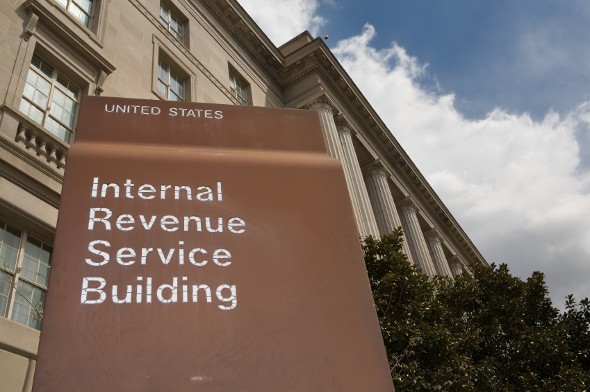Taxes are a necessary part of life, and the money you pay in helps to fund schools, roads, parks, hospitals and other public services. But who decides how much you pay? And is there anything you can do to shrink your tax bill? Understanding how your taxes work can help you take greater control of your finances. A financial advisor who specializes in tax planning can also help optimize your finances for tax-efficiency.
What Are Taxes?
Taxes are money collected to fund government operations and public services. Before what we recognize as income tax was introduced in 1913, the U.S. government relied mainly on import taxes, called tariffs, to raise revenue.
Today, Americans pay several types of taxes, including income, property, sales, excise, capital gains and estate taxes. Opinions about taxes vary, with some believing that high taxes slow economic growth, while others thinking that taxes help distribute income and fund programs for the common good.
Taxes often pay for services or programs that individuals may not use or agree with. For example, your taxes might support public schools even if you don’t have children. Or they may go to fund wars or policies that you oppose. is one reason raising taxes can be politically challenging.
Most workers prepay part of their tax bill through payroll taxes. These deductions come out of paychecks and are used to cover income taxes, Social Security and Medicare contributions throughout the year. A quick check of your paystubs should show you exactly how much you earned, and how much you paid in federal and state taxes each pay period.
Note that:
- Pre-tax earnings are the amount you earned, before any taxes or other deductions are taken out.
- After-tax pay is the money that makes its way into your bank account on payday.
Pre-tax earnings, or gross pay, is always the higher of the two numbers. Understanding the difference between pre-tax and post-tax income can help with budgeting and financial planning. Tools like SmartAsset’s paycheck calculator can estimate your take-home pay after taxes.
How Federal, State and Local Taxes Work
Federal, state and local governments have the authority to collect taxes. Each one can use the taxes they collect differently.
At the federal level, income taxes, payroll taxes, capital gains taxes and estate taxes fund nationwide programs such as Social Security, Medicare, defense and infrastructure.
States can assess income tax, sales tax, property taxes and excise taxes. But not every state collects the same types—nine states have no income tax, while others like California have some of the highest rates.
This means two people with the same income can face very different overall tax burdens depending on where they live.
Local governments (counties, cities and school districts) often collect property taxes or impose additional sales taxes. These revenues are used to fund schools, police and fire departments, parks and other community services.
Together, federal, state and local taxes make up your total tax liability. Looking at all three levels of taxation, rather than just your federal return, gives you a clearer picture of your effective tax rate.
Direct Taxes

A direct tax is a tax that’s paid straight from the individual or business to the government body that imposes the tax. Examples of direct taxes include:
- Individual income taxes (paid to the federal and state governments)
- Corporate taxes (paid on an organization’s profits)
- P taxes (paid on the value of real estate).
The federal income tax almost didn’t make it into law because the Supreme Court initially objected to the fact that it was a direct tax, rather than being apportioned among the states based on population. The 16th Amendment to the Constitution overrode the Supreme Court’s ruling in 1913 and the direct income tax was born. Direct taxes are based on a percentage of the value of what is being taxed, and they are set by state and federal law.
Indirect Taxes
Indirect taxes are typically added on transactions for goods and services like imports, gas, alcohol and tobacco. They include:
- Sales taxes
- Value-added taxes
- Sin or excise taxes
- Tariffs
These taxes are considered indirect because they do not flow straight from the payer to the government. For example, when you pay a sales tax you don’t pay that money to the government. The merchant who sells your goods pays the sales tax to the government.
Indirect taxes are in some sense hidden by definition. You pay a higher price for a flat-screen TV to account for the sales tax rather than writing the government a check for that sales tax amount. This kind of tax is also known as an indirect business tax.
Unlike direct taxes, indirect taxes are imposed at the same rate for each transaction, without taking into account the wealth of the person. Critics say this is unfair because it taxes the income of a poorer person more than a wealthier one.
Tax Expenditures
Tax expenditures are defined by the law as “revenue losses” from special tax code provisions that can help taxpayers lower taxes. Examples of these include tax deductions and tax credits. Here’s how they compare:
- Deductions reduce your taxable income. As a result, you pay lower taxes. The higher your tax bracket (the percentage of the income that you owe in taxes) the more valuable a tax deduction is. As an example, a $500 tax deduction is worth much more to someone in the 35% tax bracket than someone in the 15% tax bracket because 35% of $500 ($175) is more than 15% of $500 ($75).
- Tax credits directly reduce the amount of taxes you owe. A $500 tax credit reduces your tax bill by $500. Tax credits can be refundable or non-refundable, depending on whether you can receive money back if the credit exceeds what you owe.
For example, if your total tax liability (what you owe to the government) is $800, and you get a $1,000 non-refundable tax credit, your $800 tax liability would be canceled out but you wouldn’t be able to keep the remaining $200 ($1,000 – $800). With a $1,000 refundable tax credit you would get those $200 from the government.
Bottom Line

Taxes are unpleasant but also unavoidable. Understanding how they work can help you manage your finances and maximize your income. A tax plan can set up your personal finances strategically to take advantage of different tax breaks and tax credits, which could help reduce how much you owe in taxes. That can leave you with more money to invest and save for the future, or work toward other financial goals.
Tax Planning Tips
- Taxes can be complicated. You want to make sure you’re getting every deduction and credit you are entitled to. That’s where a financial advisor can help. Finding a financial advisor doesn’t have to be hard. SmartAsset’s free tool matches you with vetted financial advisors who serve your area, and you can have a free introductory call with your advisor matches to decide which one you feel is right for you. If you’re ready to find an advisor who can help you achieve your financial goals, get started now.
- A financial advisor can help lower your taxes. One strategy could be to harvest your losses. This means that you will be able to use your investment losses to offset the income that you made from other investments.
- Figuring out your taxes doesn’t have to be complicated. SmartAsset’s income tax calculators will help you calculate federal, state, and local taxes.
Photo credit: © iStock/PixelsEffect, © iStock/BartekSzewczyk, © iStock/Skyhobo
